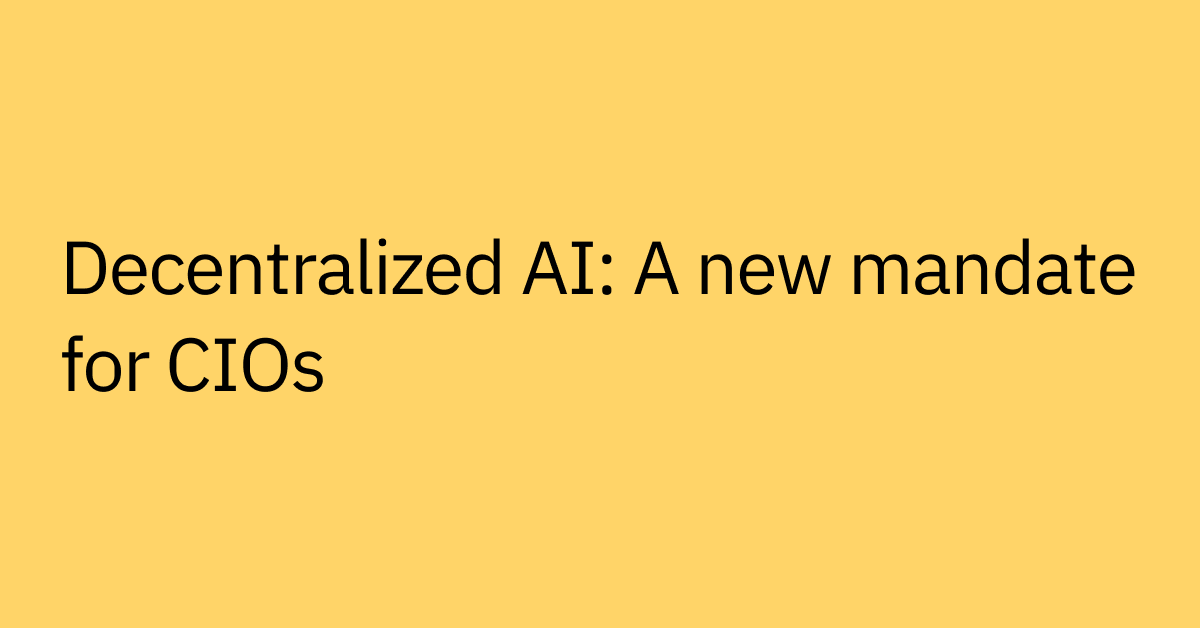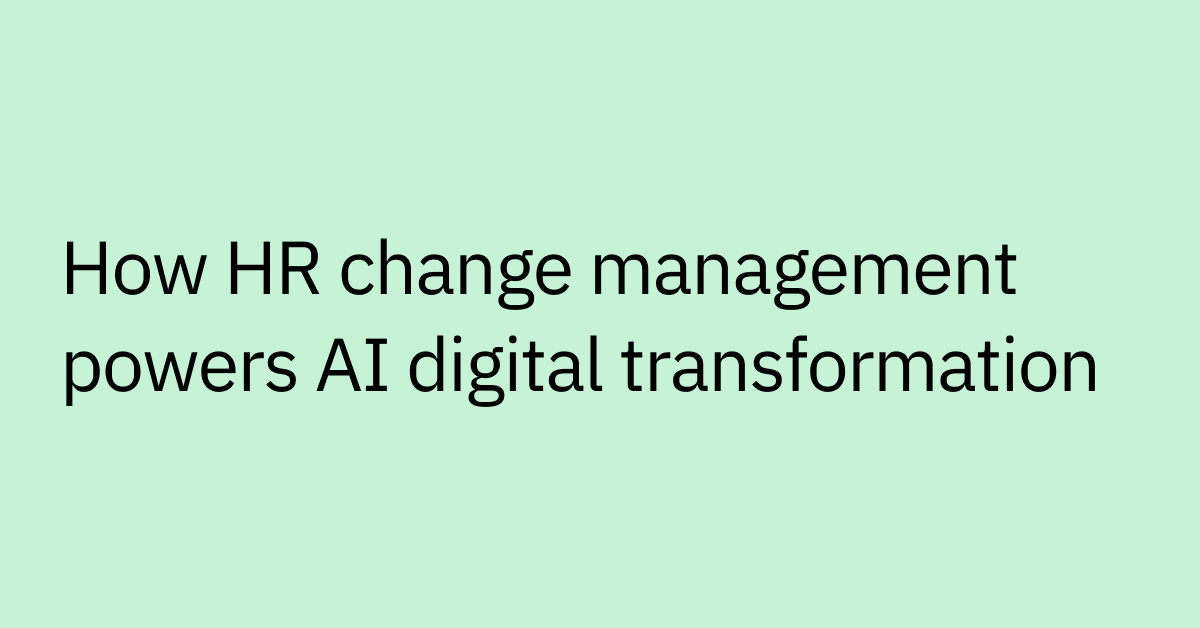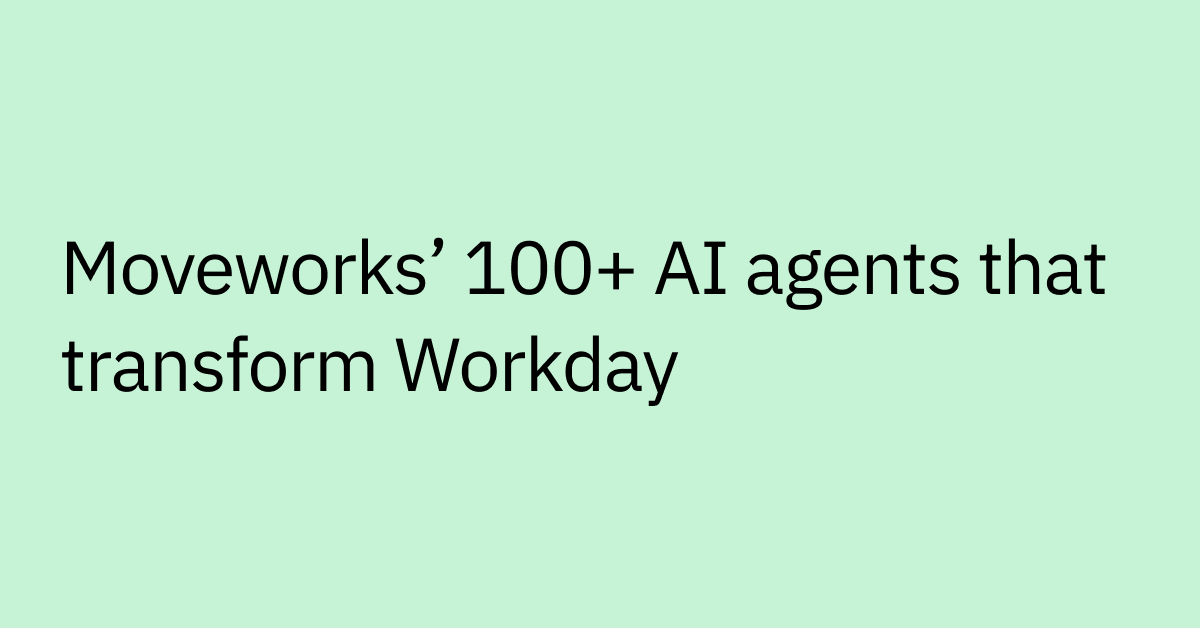Table of contents
How long does it take to resolve an IT ticket at your organization? For many companies, it’s over 30 hours.
The culprit is often outdated helpdesk technology that can't keep pace with modern enterprise demands. As your organization grows, the limitations of basic ticketing systems become more apparent: slow routing, repetitive tasks, and fragmented user experiences.
But there's good news. The right enterprise helpdesk software can change your entire approach.
Modern enterprise helpdesk software combines AI, automation, and self-service to streamline support operations — turning IT support from a frustrating bottleneck into a driver of productivity.
The potential result? Greater efficiency and significant savings in operational costs.
Ready to modernize your approach to enterprise support? Let’s look at the some of the top enterprise helpdesk software solutions available today, how they compare, and how to select the right one for your organization's specific needs.
At a glance: Top enterprise helpdesk software
Company | Best For | Top Features | Category |
Moveworks | Enterprises seeking autonomous resolution for IT/HR issues and more | Agentic AI-powered resolution, multilingual support, 100s of integrations, 24/7 automated issue resolution | End-to-end employee support automation |
Espressive | Mid-to-large companies focused on reducing ticket volume | NLU for intent recognition, intelligent routing, knowledge base creation | IT ticket deflection |
Freshservice | Organizations needing combined ITSM and self-service | Visual workflows, asset management, marketplace integrations | Internal service management |
Jira Service Management | Organizations with strong developer focus | Agile ticketing, Atlassian ecosystem integrations, developer-friendly interface | Developer-centric ITSM |
BMC Helix | Enterprises transforming legacy ITSM operations | AI-driven automation, predictive analytics, unified interface | AI-enhanced IT operations |
Zoho Desk | Customer support teams managing multiple channels | Context-aware communication, workflow automation, customer insights | External customer support platform |
Salesforce Service Cloud | Organizations focused on personalized, CRM-integrated service | 360-degree customer view, automation, customizable processes, Salesforce ecosystem integration | CRM-driven customer support |
Zendesk | Companies needing flexible internal request handling | Customizable ticket forms, integrated knowledge base, workflow automation | Internal request processing |
Freshdesk | Customer-facing teams prioritizing fast ticket resolution | AI-powered ticket management, canned responses, SLA management | Omnichannel customer support |
What is enterprise helpdesk software?
Enterprise helpdesk software is a platform designed to manage, automate, and streamline support across large organizations.
Unlike basic ticketing tools, it supports high volumes of internal and external requests, integrates with a wide range of enterprise systems, and enables intelligent automation through AI and self-service.
These platforms provide a structured way to:
- Track and resolve employee and customer issues
- Automate repetitive IT and HR tasks
- Route tickets based on context and urgency
- Offer self-service options to reduce support load
- Generate insights to improve service quality and speed
Modern solutions go beyond support efficiency — they often use AI to help enterprises improve productivity, reduce operational costs, and deliver seamless experiences at scale.
Why enterprises need helpdesk software
Enterprise support teams manage a huge number of requests, navigate complex systems, and face growing pressure to minimize downtime — all while delivering a seamless employee and customer experience.
Consider these all-too-common scenarios:
- When your employees and customers encounter issues, they typically want help, and they want it now. Without an efficient helpdesk system, you’ll likely see productivity losses and growing frustration.
- Your IT team spends hours manually categorizing and routing tickets, leaving little time for strategic initiatives or actually solving the root of the problems that cause many of the issues.
- Global operations mean support requests arrive 24/7 in multiple languages, but your support team only works business hours in one or two time zones.
These challenges are as inconvenient as they are costly. A simple password reset costs an average of $87.
Multiply that by thousands of monthly tickets, and the business impact becomes pretty clear. In larger enterprises, these costs can accumulate significantly, with some organizations allocating over $1 million annually for support.
Modern AI-powered helpdesk software addresses these challenges by providing a structured framework for managing support requests. Instead of emails disappearing into crowded inboxes or urgent issues getting buried under routine requests, helpdesk software enables every support need is properly tracked, prioritized, and resolved.
But not all helpdesk solutions are the same. Basic ticketing tools may simply organize requests, while advanced platforms use AI to transform the entire support experience.
AI enhances helpdesk software by:
- Automating routine tasks like ticket categorization and routing, freeing support staff for more complex issues
- Empowering users with self-service options, letting them solve common problems on their own without waiting for support
- Providing data-driven insights into recurring issues, helping organizations address root causes
The most advanced helpdesk tools go even further with agentic AI — a new generation of AI that can understand requests made using everyday language, make decisions, and take independent actions to resolve issues.
In other words, agentic AI doesn't just route tickets — it’s designed to autonmously resolve many basic issues with minimal human oversight.
Key platform differences: Self-service support, helpdesk software, and IT service desk software
Self-service employee support platforms, IT service desk platforms, and customer support helpdesk platforms – they provide similar and occasionally overlapping capacities for supporting scalable operations, providing tools for communication, and maintaining high service quality through workflow automation and self-service options.
That’s why it helps to understand the differences between them to enable your organizations to tailor their support strategies to meet specific needs.
- Self-service employee support: Encourages autonomy and efficiency by enabling employees to quickly resolve common issues themselves, reducing the burden on IT staff and improving response times.
- IT service desk: Enables efficient management of internal IT issues, allowing IT teams to prioritize and address incidents systematically, thereby maintaining productivity and minimizing downtime.
- Customer support helpdesk: Enhances customer satisfaction by providing responsive and organized support, addressing external queries and issues effectively to foster loyalty and improve the overall customer experience.
This clarity helps allocate resources appropriately, streamline workflows, and align support services with the specific expectations and requirements of both employees and customers, ultimately enhancing overall service efficiency and satisfaction.
Top self-service employee support tools for employee support
Self-service platforms let employees find answers and resolve common issues — like password resets, software access, or HR policy questions — on their own, without having to wait for help. These tools are quickly becoming a big part of enterprise support strategies, helping cut down on ticket volumes, boost employee satisfaction, and free up service teams for more complex work.
1. Moveworks — Empower global support with agentic AI
Moveworks AI Assistant is at the forefront of employee self-service technology. It helps to free your help desk from L1 ticket queues and give them valuable time back to focus on bigger initiatives with autonomous resolution for the most routine and repetitive requests.
Key features:
- Understanding natural language employee requests in real time
- 24/7 instant support through Microsoft Teams, Slack, and email
- Automatically resolving common issues (e.g., password resets and software access requests)
- Answering HR and IT policy questions from knowledge bases
- Automating multi-step workflows (including employee onboarding or approvals)
- Multilingual support for global operations
- Integration with 400+ enterprise applications
The platform's self-service capabilities let employees help themselves, helping to drastically reduce the burden on support teams and accelerate issue resolution, while improving employee experience at scale.
Want to see how Moveworks can transform your employee IT support? Try it out now for yourself.
2. Espressive — Deflect employee tickets with intelligent self-service
Espressive offers a virtual support agent designed to reduce IT ticket volume through natural language understanding (NLU) and automated resolution.
Key features:
- Natural language processing for understanding employee intent
- Automated resolution for common support issues
- Intelligent routing of complex tickets to appropriate teams
- Self-learning knowledge base that improves through machine learning
Espressive works well for mid-to-large organizations looking to reduce basic support ticket volume and free up IT resources. Its strength lies in understanding employee intent through natural language processing.
3. Freshservice — Automate service delivery across IT, HR, and facilities
Freshservice combines IT service management (ITSM) functionality with self-service capabilities, making it a versatile option for organizations looking to streamline support across multiple departments.
Key features:
- Visual workflow builders for no-code process automation
- Asset management tools for hardware and software lifecycle tracking
- Pre-built integrations through its marketplace
- Ticketing system with employee self-service options
- User-friendly interface
Freshservice is for organizations that need both ticketing capabilities and employee self-service options, with automation features that help cut down on the manual work for support teams.
IT service desk tools
While self-service tools focus on employee-facing support, IT service desk solutions provide the actual foundation for managing complex support operations. These platforms offer workflow management, integration capabilities, and specialized tools for IT professionals, specifically.
Connecting these systems with Moveworks can boost their abilities further, letting employees quickly handle many common issues on their own.
4. Jira Service Management — Accelerate IT ops with agile ticketing and dev integration
Jira Service Management brings Atlassian's project management expertise to IT service desk operations, with its strength benefitting environments where development and operations teams work closely together.
Key features:
- Integration with Atlassian ecosystem tools (Jira, Confluence, Bitbucket)
- Compatibility with Moveworks for enhanced automation
- Agile methodology support (sprints, boards, backlogs)
- Developer-friendly interface
- API-first approach for customization
- Support ticket linking with code changes and documentation
- Workflow adaptation capabilities
This solution is a fit for organizations with strong development teams or those using DevOps, though you might need some technical know-how to get the most out of it.
5. BMC Helix — Modernize ITSM with AI-driven automation and insights
BMC Helix's IT service management blends classic ITSM features with AI-powered automation and analytics.
Key features:
- AI-powered service desk for issue categorization and prioritization
- Automated resolution for common support problems
- Predictive analytics for proactive problem identification
- A single interface to manage both hybrid cloud and on-premises IT systems
- Smart automation for routine task handling
- Legacy system integration capabilities
This solution is suited for enterprises looking to transform legacy ITSM systems with more modern capabilities without completely replacing their current systems. With its security and compliance features, it's also a fit for regulated industries.
Customer support helpdesk tools
Internal support is much different from customer-facing support, but a lot of organizations still rely on helpdesk software to handle both. These tools are designed to improve the customer experience while also offering the workflow management features needed to keep internal support running smoothly.
6. Zoho Desk — Deliver multichannel support with built-in automation
Zoho Desk provides a platform for managing customer support across multiple channels, with strong automation capabilities to improve efficiency.
Key features:
- Multi-channel support management (email, chat, phone, social media)
- Single, streamlined view of customer interactions for agents
- Automated ticket assignment and status updates
- Notification management system
- Analytics and reporting for customer support trends
- Customer insight generation tools
- Easy integration with other Zoho applications
This solution works well for organizations managing external customer support across channels like email, chat, phone, and social media.
7. Salesforce Service Cloud — Personalize customer service with a 360-degree view
Salesforce Service Cloud brings customer relationship management (CRM) expertise to helpdesk operations, creating a support experience deeply integrated with customer data.
Key features:
- 360-degree customer view with relationship context
- Automated routine task handling
- Multi-channel customer communication management
- Industry-specific customization capabilities
- Knowledge management system
- Moveworks integration for AI-driven automation
- Connection with Salesforce CRM ecosystem
Organizations that prioritize customer experience and already use Salesforce for CRM may find this solution suitable for their needs.
8. Zendesk — Streamline internal requests with customizable workflows
While often more associated with customer support, Zendesk also offers its own way to assist in internal helpdesk operations.
Key features:
- Customizable ticket forms and fields for various internal request types
- Integrated knowledge base for employee self-service
- Workflow automation tools for ticket processing and routing
- Marketplace of apps and integrations
- Intuitive user interface for non-technical staff
Zendesk works well for organizations looking for flexibility in managing internal requests, while its customization options allow it to adapt to different support scenarios.
9. Freshdesk — Simplify customer support with AI-powered ticketing and automations
Freshdesk makes customer support ticketing simple and efficient, with smart AI features that keep getting better over time.
Key features:
- AI-powered ticket categorization and prioritization
- Canned response library for quick agent replies
- SLA management tools for response time monitoring
- Automated escalation workflows
- Performance tracking through reporting and analytics
- Moveworks integration for enhanced AI automation
This solution is a great fit for teams focused on improving their external customer experience.
How to compare help desk systems
Beyond pricing, when evaluating helpdesk software, keep the following factors top of mind so that you are able to select a solution that meets your organization's specific needs.
1. Integrations
A helpdesk doesn't operate in isolation. It needs to connect with your existing technology ecosystem without disrupting the processes that work.
Evaluate compatibility with:
- Collaboration tools (Slack, Microsoft Teams)
- Identity management systems (Okta, Azure AD)
- Human resource information system (HRIS) platforms (Workday, SAP SuccessFactors)
- ITSM tools (IBM, Jira)
- Business applications (Salesforce, Oracle)
Look for solutions with pre-built connectors for your most-used systems, as well as API flexibility for custom integrations. Advanced solutions, like Moveworks, offer hundreds of pre-built integrations that work right out of the box.
2. Data security and compliance
Enterprise helpdesk systems often manage sensitive information, making data protection and compliance needs a priority. Evaluate:
- Data encryption standards (both at rest and in transit)
- Access control and authentication mechanisms
- Compliance certifications relevant to your industry (SOC 2, GDPR, HIPAA, etc.)
- Data retention and deletion policies
- Audit logging and transparency
For heavily-regulated industries like healthcare and finance, these considerations are especially important. Look for vendors who may be able to provide detailed, transparent information about their security and compliance practices and third-party audits.
3. Scalability and customization
Your helpdesk solution should grow with your organization and be able to adapt to your specific needs as they change. Consider:
- User licensing models and cost scaling
- High performance under heavy ticket volumes
- Multi-department and multi-language support
- Customization options for forms, workflows, and dashboards
- Ability to extend functionality through plugins or custom development
The right solution should be easy to set up while staying flexible for the long run. Low-code or no-code customization options are a great way to get the best of both worlds.
4. Analytics and reporting
A modern helpdesk should do more than just close tickets. It should also be able to give you insights to keep improving.
Look for platforms that offer:
- Real-time dashboards and customizable reports to track key performance indicators (KPIs)
- Trend analysis to identify recurring issues and root causes
- SLA monitoring to enable timely responses and resolution
- Employee satisfaction metrics, including CSAT and NPS
- Predictive analytics to anticipate support demand and resource needs
These features turn your helpdesk from just a reactive service function into a proactive, more strategic tool that boosts your organization’s overall efficiency and improves decision-making.
5. Usability and adoption
Even the most powerful helpdesk solution fails if users don't adopt it. Ease of use is critical to successful adoption across your organization.
Be sure to look at:
- Intuitive interfaces for both support agents and employees
- Mobile accessibility for on-the-go support
- Clear, accessible training and onboarding resources
- Role-based customization to meet the needs of different teams
- Compliance with accessibility standards to support diverse employee needs
Wherever possible, try to take advantage of demos or trials with real users from different departments to see how it works in the real world before making your decision.
6. Time to value
Implementing a new helpdesk solution is a significant investment — not just in budget, but in time and resources. To maximize ROI, consider how quickly the platform can deliver measurable impact.
Key factors to evaluate:
- Implementation timelines and resource requirements
- Availability of out-of-the-box functionality vs. custom configuration needs
- Training and onboarding requirements for support staff and employees
- Potential challenges in integrating with existing tools and systems
- Ongoing maintenance, updates, and administrative overhead
Look for solutions that offer quick wins through pre-built workflows and native integrations — while still supporting deeper customization as your needs evolve. The best platforms strike a balance between quick deployment and long-term flexibility.
Empower your IT team with a helpdesk that’s built for what's next
As more businesses rely on digital tools and distributed teams, the demands on IT support continue to grow. Traditional helpdesk systems — built for manual processes and static workflows — struggle to scale with this complexity.
Platforms like Moveworks can offer a smarter way forward.
The future of enterprise support lies in fixing problems before they have a chance to slow things down.
By combining agentic AI with enterprise-grade automation, Moveworks enables employees to address many of their own IT issues instantly — from resetting passwords to provisioning software and managing devices — through natural language conversations in tools like Slack, Microsoft Teams, and email.
This isn't just ticket deflection — it's empowering autonomous resolution.
Moveworks supports various layers of IT operations:
- Service management: Troubleshoot issues, triage tickets, and provide proactive updates
- Identity and access: Provision software, reset passwords, and manage user access
- Hardware management: Simplify onboarding, refresh cycles, and device returns
- Security: Streamline outage communications and incident response workflows
- Analytics and knowledge: Surface insights through Employee Experience Insights (EXI) and fill knowledge gaps with AI-powered content via Knowledge Studio
This enables IT teams to stay better focused on strategic initiatives while employees get what they need faster.
Ready to modernize your helpdesk? Request a demo to see how Moveworks can help you create a support experience that tackles today’s challenges and tomorrow’s.



